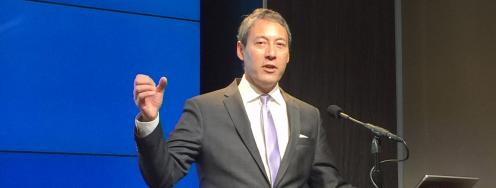North Korea’s Test: What, How Big, and What it Means
On the radar: “Smaller and light”; Slightly more powerful than last test; Early responses; Big cut for MOX; Best adapt that 4th phase; and Deploying 1,100 warheads.
On the radar: “Smaller and light”; Slightly more powerful than last test; Early responses; Big cut for MOX; Best adapt that 4th phase; and Deploying 1,100 warheads.
February 12, 2013 | Edited by Benjamin Loehrke and Alyssa Demus
Testing, testing - North Korea announced today that it detonated a “smaller and light” nuclear device. The test would help North Korea advance its technological goal of building a nuclear warhead deliverable by ballistic missile, reports Chico Harlan of The Washington Post.
--”Security analysts said there is no immediate way to verify the North’s claim that it has successfully manufactured a smaller, or miniaturized, warhead. The North, in the past, has sometimes exaggerated its claims. Analysts emphasized that if the North wants full confidence that its nuclear devices work reliably, the nation will likely have to test again — repeatedly.” Full article here. http://wapo.st/Xyzxow
WH statement - “The danger posed by North Korea’s threatening activities warrants further swift and credible action by the international community. The United States will also continue to take steps necessary to defend ourselves and our allies. We will strengthen close coordination with allies and partners and work with our Six-Party partners, the United Nations Security Council, and other UN member states to pursue firm action.” White House statement here. http://1.usa.gov/V3QiO9
DNI statement - “The U.S. Intelligence Community assesses that North Korea probably conducted an underground nuclear explosion in the vicinity of P’unggye on February 12, 2013. The explosion yield was approximately several kilotons. Analysis of the event continues.” From the Director of National Intelligence. http://owl.li/hE5UM
North Korea statement - “The test was conducted in a safe and perfect way on a high level with the use of a smaller and light A-bomb unlike the previous ones, yet with great explosive power. It was confirmed that the test did not give any adverse effect to the surrounding ecological environment.” From KCNA. http://owl.li/hE6te
Seismic event - Magnitude 5.1 seismic event recorded ENE of Sungjibaegam, North Korea. From the US Geological Survey. http://on.doi.gov/WihJk2
Tweet - @CPPGeophysics: Comparison of seismic waveforms of 2009 North Korean nuclear test and 2013 event (awesome image from @drrocks1982). https://t.co/D2FJDq6E
Early estimate - Tweets @james_acton32: #DPRK #nuke update 2: With revised #USGS seismic magnitude, yield could be as high as 15 kT.
CTBTO statement - “The [Comprehensive Test Ban Treaty Organization’s] first and preliminary automatic detections were made by up to 25 seismic stations around the world. The first data were made available to CTBTO Member States in little more than one hour, and before the DPRK’s announcement.” http://bit.ly/VQWeKj
From the experts - The U.S. “needs to work more closely than ever to coordinate policy with other stakeholders in the region. While it is important not to reward irresponsible behavior, it is also irresponsible to retreat under the rubric of ‘strategic patience.’ [...] Naming and shaming and further sanctions on the DPRK are certainly justified, [...] but by themselves, such responses have not produced adequate results,” say Daryl Kimball and Greg Thielmann in their analysis of the North Korean nuclear test. http://owl.li/hE7Qh
Welcome to Early Warning - Subscribe to our morning email or follow us on twitter.
--Have a tip or feedback for the editor? Email earlywarning@ploughshares.org earlywarning@ploughshares.org. Want to support this work? Click here.
Timeline - “North Korea’s Pursuit of Nuclear Weapons” from AP. http://abcn.ws/12IX0uP
Tweet - @nukes_of_hazard: Latest North Korean nuclear test is the world's 2,053rd and only the 3rd since 1998, reports @armscontrolnow. #DPRK http://wp.me/p10vIs-S1
How it works - “What happens with an underground nuclear test?” by Kevin Voigt for CNN. http://bit.ly/XGlJtW
Put another way... - As @ArmsControlWonk described it last night: “It go boom.”
MOX in budget gallows - After temporarily agreeing to cancel the troubled Mixed Oxide Fuel Fabrication Facility, the Obama administration is instead going to cut the program’s budget by 75%, reports Danielle Brian at the Project on Government Oversight.
--The new goal for the MOX project is to put a roof on the MOX building - scheduled to be completed next month - and spend a few hundred million dollars considering alternatives to the beleaguered project. Reminder: “The MOX program is 300 percent over budget, a decade behind schedule, and has sparked zero interest from potential customers.” http://bit.ly/1593Idc
Missile defense faults - A new GAO report casts doubt on the viability of the SM-3 Block IIB missile defense interceptor. Major issues: land-based site in Romania is not suitable for defending the U.S.; the Poland site would require boost phase launch; the North Sea would be technically a better deployment location, though it would infuriate the Russians; the Navy also doesn’t want liquid-fueled interceptors on its boats. From George Lewis at Mostly Missile Defense. http://bit.ly/WYiVsL
--Full Briefing: “Standard Missile-3 Block IIB Analysis of Alternatives” by the Government Accountability Office. January 29, 2013. (pdf) http://1.usa.gov/Wi3uf1
Options for nuclear reductions - If the Obama administration moves to reduce the nuclear arsenal to 1000-1100 deployed nuclear warheads, how might that affect the composition of the nuclear force? And how might that affect the role of nuclear weapons in U.S. national security strategy?
--Hans Kristensen at the Federation of American Scientists considers several options for fielding the nuclear arsenal. Included: download from subs, close an ICBM base, close missile squadrons, reduce the number of missiles on subs, or retire two Ohio-class subs. http://bit.ly/14Q7qHG
NM Delegation - Democratic members of New Mexico’s congressional delegation wrote a letter to the President, citing their concerns about the challenges facing the National Nuclear Security Administration and suggesting that the administration’s nominee for NNSA administrator be a reformer. They also call for funding of the $10.4 billion B-61 bomb project. http://bit.ly/Uagwgf
Events:
--President Obama delivers his State of the Union speech. February 12.
--”Evolving Global Security Challenges: From Traditional to Nontraditional Security Challenges.” Joe Cirincione, President of Ploughshares Fund. February 13, 6:00-8:00 p.m. @ Monterey Institute of International Studies. Live stream here. http://owl.li/hrbm7
--Budget Hearing: National Nuclear Security Administration Weapon Activities. February 14, 10:00 a.m. @ Rayburn House Office Building Rm. 2362-B. http://owl.li/htgVW
--”Five Myths About Nuclear Weapons: A Pragmatic Re-appraisal.” Talk by Ward Wilson. February 14, 3:30-5:00 p.m. @ American University, School of International Service. http://owl.li/hkKOD
--”The Korean Peninsula Issues.” Institute for Corean-American Studies. February 15, 1:00-4:30 p.m. @ Rayburn Office Building, Room B. http://owl.li/hr2Ag
--”Iran’s Nuclear Program: Is a Peaceful Solution Possible?” Amb. Thomas Pickering and Kenneth Pollack. February 19, 10:00-11:30 a.m. @ The Brookings Institution, Faulk Auditorium. Details here.http://owl.li/hCGQy
--”Nuclear Policy Challenges,” Joe Cirincione, President of Ploughshares Fund. February 19, 7:00-8:30 p.m. @ UW Milwaukee Institute of World Affairs. Details Here. http://owl.li/hCHz1



